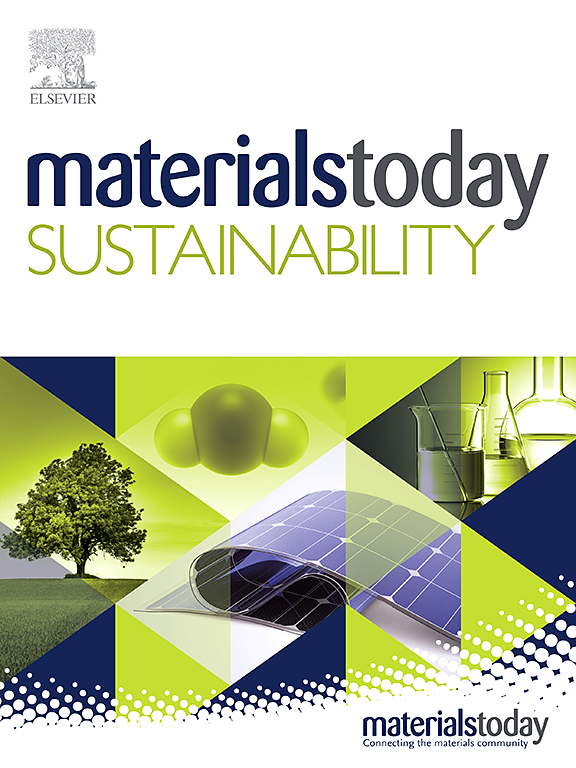Enhancing latent heat storage: Impact of geometric modifications, S-shaped enclosure walls, and L-shaped fins
IF 7.1
3区 材料科学
Q1 GREEN & SUSTAINABLE SCIENCE & TECHNOLOGY
引用次数: 0
Abstract
This study explores the thermal performance and phase change behavior of five thermal energy storage (TES) models with varied geometric and design parameters, aiming to enhance heat transfer and storage efficiency.The impact of an innovative S-shaped heat source wall configuration and L-shaped fins on phase change dynamics was examined through numerical simulations, presenting a novel approach to enhancing TES system designs. Temperature distribution, transient PCM temperature, velocity fields, and liquid fraction evolution were analyzed to evaluate melting time, energy storage density (SEm), mean power (Pm), and total heat storage capacity. The findings indicate that geometric enhancements and fin configurations significantly influence phase change performance. Model 01 exhibited the longest melting time of 11,040 s, whereas Model 05, with enhanced thinner (0.3 mm) and longer (112.3 mm) fins, achieved the shortest melting time of 2,720 s, reducing melting time by 75.36 %. Model 05 also demonstrated the highest SEmof 274.12 kJ/kg and Pm of 67.72 W, highlighting its superior thermal storage efficiency. These results emphasize the crucial role of fin geometry and enclosure profiles in improving TES system performance.
增强潜热储存:几何修改的影响,s形外壳壁,和l形鳍
本研究探讨了五种具有不同几何和设计参数的热能储存(TES)模型的热性能和相变行为,旨在提高传热和储存效率。通过数值模拟,研究了创新的 S 型热源壁配置和 L 型鳍片对相变动力学的影响,提出了一种改进 TES 系统设计的新方法。通过分析温度分布、瞬态 PCM 温度、速度场和液体组分演变,评估了熔化时间、储能密度 (SEm)、平均功率 (Pm) 和总储热量。研究结果表明,几何增强和鳍片配置对相变性能有显著影响。模型 01 的熔化时间最长,为 11,040 秒,而模型 05 的翅片更薄(0.3 毫米)、更长(112.3 毫米),熔化时间最短,为 2,720 秒,熔化时间缩短了 75.36%。05 型还显示出最高的 SEmof 274.12 kJ/kg,Pm 为 67.72 W,凸显了其卓越的热存储效率。这些结果凸显了翅片几何形状和外壳轮廓在提高 TES 系统性能方面的关键作用。
本文章由计算机程序翻译,如有差异,请以英文原文为准。
求助全文
约1分钟内获得全文
求助全文
来源期刊

Materials Today Sustainability
Multiple-
CiteScore
5.80
自引率
6.40%
发文量
174
审稿时长
32 days
期刊介绍:
Materials Today Sustainability is a multi-disciplinary journal covering all aspects of sustainability through materials science.
With a rapidly increasing population with growing demands, materials science has emerged as a critical discipline toward protecting of the environment and ensuring the long term survival of future generations.
 求助内容:
求助内容: 应助结果提醒方式:
应助结果提醒方式:


